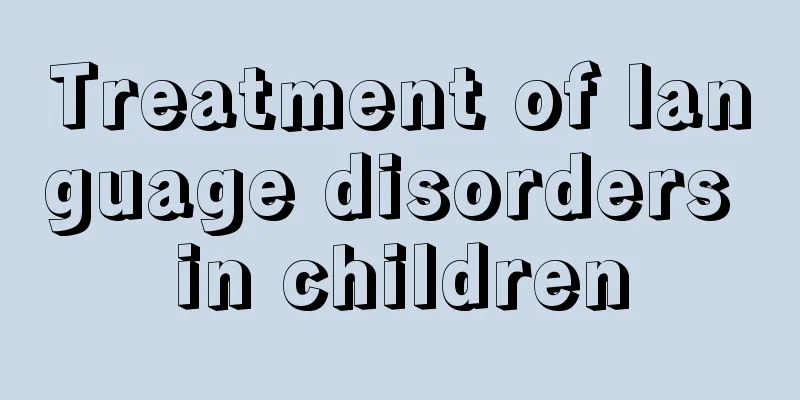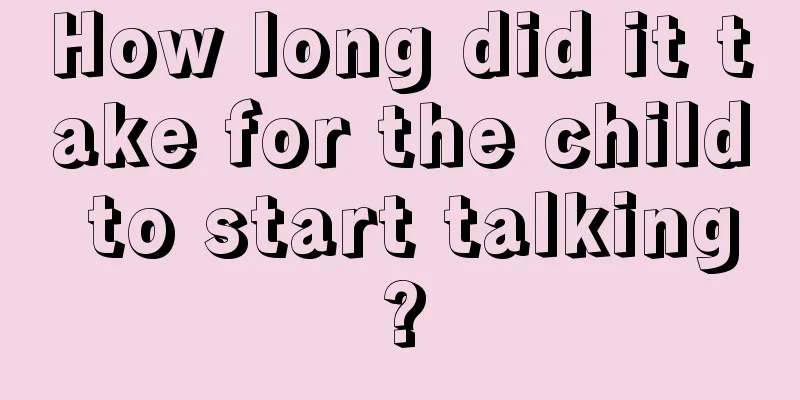Treatment of language disorders in children

|
As children grow up, they always have to learn to speak, but many children cannot speak well when they first start learning to speak. This is generally a manifestation of language disorders. After language disorders occur, active treatment must be carried out to help children eliminate the obstacles and learn and grow better. The main treatments for language disorders include: etiology treatment, language training, tactile training, vocal games, learning onomatopoeia, etc. 1. Etiology and treatment:Speech disorders caused by hearing impairment should be corrected first. Congenital cleft palate, short soft palate, soft palate scar, choanae or nasopharyngeal atresia, nasal congestion or short frenulum should be treated with appropriate surgery or labor insurance treatment (such as wearing a palate support for cleft palate). For various types of aphasia, treatment is mainly targeted at the cause. 2. Language training: The treatment of abnormal speech rhythm mainly relies on speech training. The child can be asked to take calm, deep breaths in a quiet environment, exhale through the mouth, and exhale evenly in 4-5 breaths, pausing between each breath to suppress tension in the respiratory muscles and speech-building organs. After a buried training, the pronunciation reconstruction training begins. The old pronunciation habits are changed. First, the breath sound is pronounced, such as H (he), followed by the vowels A (ah), O (oh), E (goose), I (clothes), U (crow), etc. Because the mouth is open when pronouncing vowels, the airflow is not blocked, so the vowels are practiced first to keep the respiratory organs and throat relaxed. Then further practice consonants. When practicing pronouncing consonants, it is required to pronounce the vowels first and then the words with consonants. Finally, according to the effect of the practice, 2-3 word phrases are added until the whole sentence is read aloud. Strengthening confidence and perseverance are the dominant principles in speech correction work. Delayed auditory feedback device is better for correcting abnormal speech rhythm. Whether it is speech delay, various articulation disorders or deaf-muteness, tactile training, vocal games, learning, learning onomatopoeia, lip reading and wearing hearing aids can be used to help speech training according to different ages and different situations. The earlier the training starts, the better (such as 2-3 years old). Generally, it takes 3-6 months of auditory training to recognize the meaning of sounds. Therefore, it requires 2-3 years of training to acquire basic speech skills.
Ask the child to touch the Adam's apple or abdominal wall with his hand so that he can feel the vibration of the larynx and the rise and fall of the abdomen when speaking. In this way, you can experience the relationship between these changes and the pitch, strength and weakness of the voice. For example, when producing a loud sound, you must take a deep breath or a full breath, and when producing a low and weak sound, you can take a less breath. This is used to imitate and practice voice production. 4. Sound game: The system uses various equipment to organize games to practice "luck" and word-forming movements, such as blowing pieces of paper, blowing soap bubbles, and whistling. It also does tongue gymnastics, such as extending the tip of the tongue forward, retracting it, curling it up and down, and swinging it left and right. Through the above-mentioned step-by-step training, children can learn to control the size of their breathing and keep it even, so that the function of the vocal organs can be gradually restored through the senses. Then, deeper training can be performed, such as games such as stacking blocks. The child piles up blocks into a building at the table and suddenly pushes it unexpectedly. The mute child may suddenly make an "A" sound.
Show the children pictures of animals (dogs, cats), and make animal sounds into a loudspeaker, asking the children to imitate the sounds. 6. Lip reading (reading) training: Use eyes to observe the speaker's lip movements to understand the meaning of what is being said. Children with complete deafness make slow progress in learning lip reading, and lip reading has certain limitations. Some silent consonants, such as C, CH, Q, are not easy to distinguish with the eyes, and the pronunciation of K and N sounds are also not easy for children to master. |
<<: Baby's eyes have red bloodshot
>>: What should I do if my baby's head tilts to one side?
Recommend
Recurrent fever in children with viral infection
No parents want their children to get sick, but s...
Why do children have cold hands and feet when they have a fever?
It is a common phenomenon that young children hav...
What are the brain-boosting recipes for children?
We all know that children are in the stage of phy...
What are the physical methods for reducing fever in babies?
Some babies have problems with colds and fever, s...
How to treat diaper rash
Diaper eczema is a very common skin disease in ma...
The baby's face is red when he is born
Welcoming the arrival of every new life is a very...
Why are baby teeth yellow?
Every part of the human body can be invaded by ge...
What are the common diseases in infants and their treatments?
When a baby is sick it brings a lot of trouble to...
Rash in infants
Rashes in young children are a relatively common ...
The child is crying because of teething
Although teething is an important sign of healthy...
Symptoms of calcium deficiency in 15-month-old babies
Even though calcium deficiency is a symptom that ...
Can children's ADHD be cured?
There are some children who can never calm down. ...
What are the dangers of precocious puberty in children?
As foreign fast food has continued to infiltrate ...
Why do babies wake up easily when they sleep?
We all know that everyone who takes care of a bab...
What to do if your child is allergic to medicine and it itches
Children's physical health is very important,...









